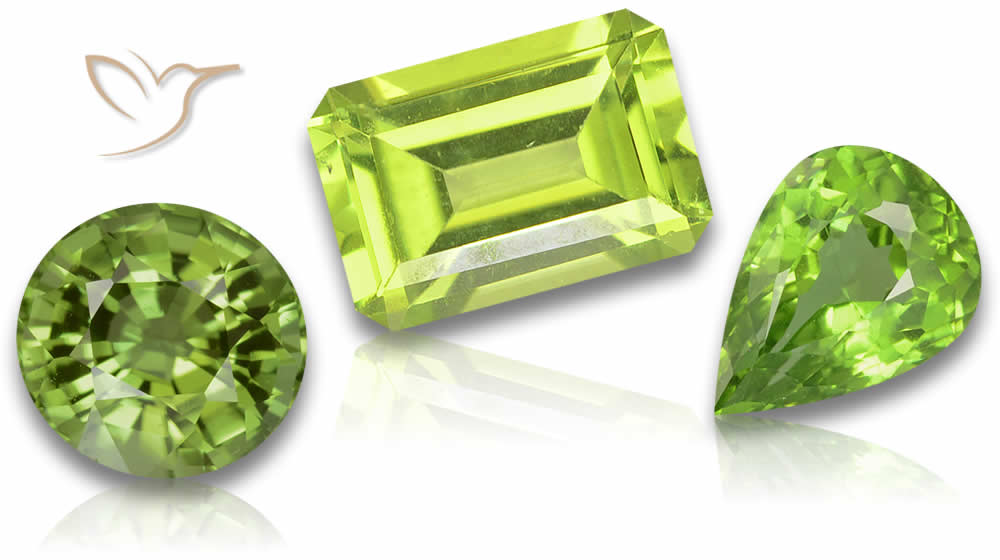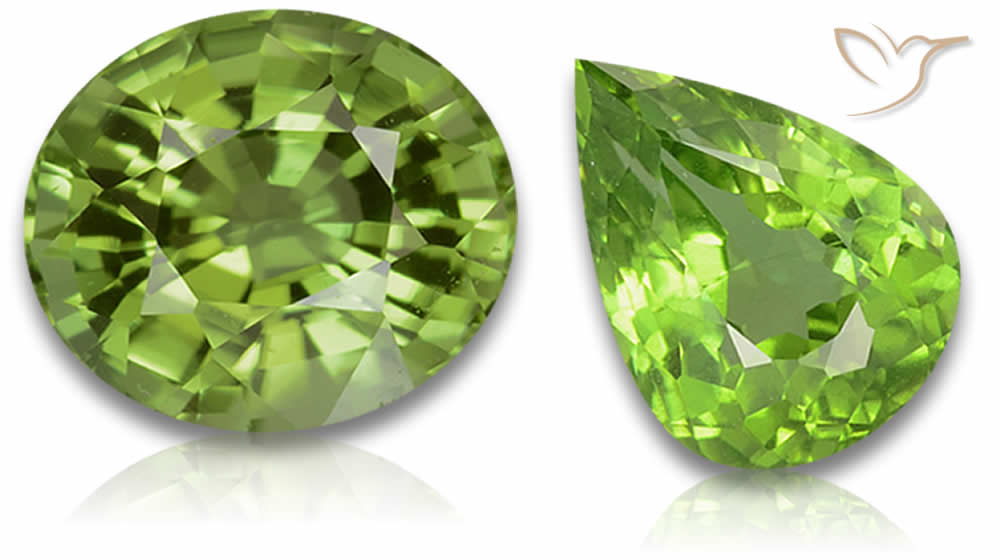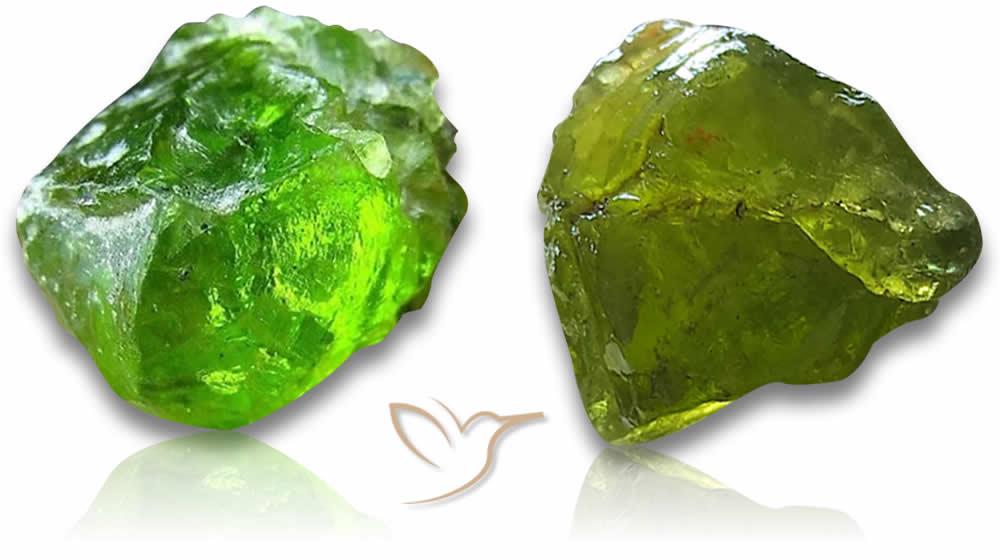Uncovering the Rich History of Peridot Gems

Peridot stands out as one of the most distinctive gemstones out there. Its story stretches back thousands of years, and it still draws people in today. Let's dive into the world of peridot gems, looking at where they come from, what they represent, and why they remain so popular.
Key Takeaways:
- Peridot gems boast a history spanning thousands of years.
- They form through geological processes, often in volcanic rocks.
- Throughout history, peridot has symbolized protection, love, and spiritual renewal.
- As the birthstone for August, it's thought to offer unique protective qualities.
- Peridot jewelry stays in demand among enthusiasts and collectors worldwide.
Tracing the Origins of Peridot Stones
Peridot, sometimes called the "evening emerald," has fascinated people for ages with its vivid green shade. But where exactly do these stones originate?
Most peridot forms deep in the Earth's mantle, about 20-55 miles underground. It's born from volcanic activity, where extreme heat and pressure during eruptions create crystals in igneous rocks as the lava cools.
Interestingly, peridot also appears in meteorites from space, making those specimens extremely rare and prized.
The oldest known peridot source is Zabargad Island (once called St. John's Island) in the Red Sea. Mining there started over 3,500 years ago, with ancient Egyptians and Romans cherishing the stone for its looks and supposed protective qualities.
Peridot Mines
| Peridot Mine | Location |
|---|---|
| Mogok | Myanmar |
| San Carlos | Arizona, US |
| Soppat | Pakistan |
| Kilimandjaro | Tanzania |
These days, peridot mines exist globally, from Myanmar and Arizona to Pakistan and Tanzania. While fairly common, its bright green color and special traits keep it in high regard.
Up next, we'll unpack the deeper meanings tied to peridot.

Symbolism and Meaning of Peridot Gems
Peridot has long been treasured for its symbolic and spiritual roles across cultures. In ancient times, it served as a talisman for good luck, shielding against evil and nightmares. Some even thought it could draw in wealth.
Its lively green evokes nature's growth, renewal, and energy - perfect for spring and summer accessories. Many ancient societies linked it to the sun, symbolizing warmth and light.
On the spiritual side, peridot is said to ease anger, cut down stress, and foster inner calm. It might also encourage personal development and new chances for success. Pretty intriguing, right?
Peridot can help to calm anger, reduce stress, and promote a sense of inner peace and well-being.
Peridot Symbolism Throughout History
Peridot's symbolism traces back to civilizations like Egypt, Greece, and Rome. Egyptians dubbed it the "gem of the sun," imagining it formed from Isis's tears. Greeks and Romans used it as protection against harm.
In the Middle Ages, European royals favored it for crowns and jewelry, believing it boosted strength and warded off bad dreams. Medieval healers applied it for issues like liver ailments and mood disorders.
Peridot Meaning in Modern Times
Today, peridot's vibrant green and symbolism keep it beloved. As August's birthstone, it's a go-to for 16th anniversaries. It represents hope and renewal in engagements, promising a vibrant future.
No matter the reason, peridot's history and charm make it a standout gem. For deeper insights, explore peridot's meanings, powers, and practical uses.
Peridot Gems as Birthstones and Their Properties

Peridot's signature green has earned it praise through the ages for its distinct benefits. Named August's birthstone in 1912 by the American National Association of Jewelers, its golden-green tone mirrors summer sunshine, said to spark joy.
Like other gems, peridot has specific traits: 6.5-7 on the Mohs scale for daily wear. It's believed to soothe stress, cleanse the body, and support wellness.
Its makeup? A type of olivine, a magnesium-iron silicate from volcanic rocks. Iron gives it that striking green.
| Birthstone | Properties and Characteristics |
|---|---|
| August Birthstone | Brings joy and happiness to the wearer; relieves stress and anxiety; promotes overall wellness |
| Hardness | 6.5 to 7 on the Mohs Scale of Hardness |
| Composition | Magnesium-iron silicate mineral found in volcanic rocks; bright green color due to the presence of iron |
When buying peridot jewelry, aim for vibrant green without brown or yellow tints, and no visible flaws like cracks.
In short, peridot's history, properties, and joyful symbolism make it a cherished birthstone and jewelry option. To learn even more, check out our comprehensive peridot gemstone information guide.
Peridot Jewelry and Its Lasting Appeal
Peridot jewelry has been celebrated for centuries for its elegant style and eye-catching beauty. Whether in necklaces, earrings, rings, or bracelets, its green shade wins over jewelry fans everywhere.
This gem works well with various metals and designs, suiting both timeless and modern looks. That's why jewelers love it.
History of Peridot Jewelry
Peridot's jewelry use goes back to ancient eras, prized for color and believed powers. Egyptians incorporated it in talismans for protection and luck.
It stayed favored through history, appearing in royal and religious pieces. In medieval times, it adorned church items and personal jewelry, thought to enhance strength and banish nightmares.
Types of Peridot Jewelry
Peridot fits many styles, appealing to diverse tastes. Here are some favorites:
| Type of Peridot Jewelry | Description |
|---|---|
| Peridot Earrings | Earrings with peridot, often with diamonds or other stones. From studs to chandeliers. |
| Peridot Necklaces | Necklaces highlighting peridot, paired with gems or metals. From chains to bold statements. |
| Peridot Rings | Rings with peridot in solitaire, halo, or vintage settings. Often with diamonds. |
| Peridot Bracelets | Bracelets with peridot alone or mixed. From bangles to cuffs. |
The Lasting Appeal of Peridot Jewelry
Lately, peridot's popularity has surged thanks to its beauty and flexibility. Its green recalls fresh landscapes and spring vitality, ideal for a natural vibe.
Durable for everyday use and more affordable than some gems, it's a smart pick for quality on a budget.
All in all, peridot jewelry holds timeless charm that keeps captivating people globally.
Conclusion
Our look at peridot's history reveals a gem with a deep, intriguing past. From earthly origins to cultural roles, it shines in the gem world.
Peridot's jewelry legacy endures - from stunning necklaces to sparkling earrings. Its green color, properties, and meanings make it ideal for any piece.
Ultimately, peridot's story blends beauty, significance, and symbolism. Whether you're a jewelry expert or just a fan, it's bound to spark your interest. For additional background, discover more facts about peridot gemstones.
Frequently Asked Questions
What is the history of peridot?
Peridot has a rich history that dates back thousands of years. It has been prized for its vibrant green color and was often considered a symbol of the sun in ancient Egypt. The gemstone was believed to have protective properties and was even used as a talisman against evil spirits. Today, peridot is still highly regarded for its unique beauty and is a popular choice for jewelry.
Where do peridot stones come from?
Peridot stones are formed deep within the Earth's mantle and are brought to the surface through volcanic activity. The majority of peridot deposits are found in volcanic rocks, as well as in meteorites that have fallen to Earth. Some of the most significant sources of peridot include Egypt, Myanmar, Pakistan, and the United States.
What is the symbolism and meaning behind peridot gems?
Peridot gems are associated with various meanings and symbolism. Throughout history, they have been believed to bring good luck, abundance, and prosperity. Peridot is also considered a stone of compassion and is said to promote emotional well-being. It is often associated with the heart chakra and is believed to help heal emotional wounds.
Are peridot gems used as birthstones and what are their properties?
Peridot is the birthstone for the month of August. It is often associated with strength, protection, and renewal. Peridot stones are known for their vibrant green color, which is caused by iron trace elements. They have a hardness rating of 6.5 to 7 on the Mohs scale, making them a suitable choice for everyday jewelry. Peridot is also believed to have healing properties and is said to help alleviate stress and anxiety.
What makes peridot jewelry so popular?
Peridot jewelry is highly sought after for its vibrant green color and unique beauty. The gemstone's intense green hue, ranging from light to olive green, makes it stand out and adds a pop of color to any outfit. Peridot jewelry is versatile and can be worn for both casual and formal occasions. Its bright and refreshing appearance makes it a favorite among those who appreciate natural gemstones.
Note: Any mentions of healing or spiritual properties in this article are rooted in historical and cultural beliefs. These claims are not supported by scientific evidence and should not replace professional medical advice.

